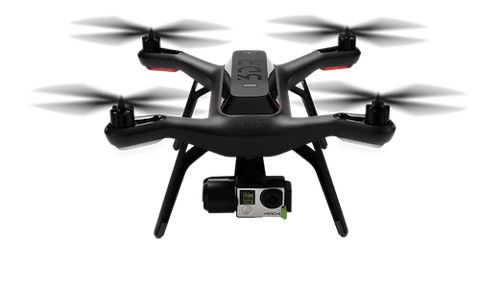When British Columbia wildlife officials recently banned the use of unmanned drones for hunting, they were actually very late to do so. Nearly every state in the US already prohibits the use of drones to directly scout for game.
Laws outlawing drones for hunting parallel existing regulations that have been around for years against flying on the same day you hunt. So you can’t fly over a herd of elk and then land your helicopter and go shoot them.
It all comes down to the idea of “fair chase,” a term first coined by Teddy Roosevelt and the group of hunters that founded the Boone and Crockett Club.
According to the group’s website, fair chase means “the ethical, sportsmanlike, and lawful pursuit and taking of any free-ranging wild, native North American big game animal in a manner that does not give the hunter an improper advantage over such animals.”
RELATED: How the Boone and Crockett Club Helped Lead the Conservation Movement
As technology improves, regulators are continually adjusting the rule books. In New Hampshire, officials recently banned the use of smart rifles and live action cameras, such as those used in the TrackingPoint precision guided system.
While these laws are intended to address a perceived unfair advantage, many hunters question whether they would actually make things easier. Sure they offer a bird’s eye view without the use of expensive helicopters, but drones are still noisy. They sound like a swarm of bees and could easily spook deer or other animals.
Then again, a buzzing drone could be used to flush out birds. But as duck hunters will tell you, it’s awfully difficult to know where those birds are going to go, so the idea of actually pulling this off successfully is very unlikely.
Meanwhile, feel free to continue using your drone to spy on your neighbors.
Photo credit: Pixabay
Top 3 Aerial Drones for the Perfect Shot
-
Phantom

We start with the phantom, one of the most widely consumer professional grade consumer drone. These drones work phenomenally well but only has a flight time of 10 to 15 minutes. Used in many cases instead of costly helicopters, the phantom offers complete control in the air with a failsafe setting for automatic takeoffs and landings.
-
Lily

The lily, which came on the scene earlier this year, has been creating quite a buzz on social media. The joy of the lily is its ease of use as there is no remote control. Instead, the user puts a tracking device in his or her pocket and you just throw the device into the air and goes. The lilly does the rest. Pre-programmed to perform aerial maneuvers that track the user with various patterns, the lily offers an ingenious way to film yourself mountain biking, skiing down a mountain or even boating without any hassle at all. And it comes with a reported battery life of four hours.
-
Solo

The most recent offering on the drone market that’s been making waves is called the solo. A combination of the lily and the phantom, the solo offers more control than the lily but with similar fully autonomous flying modes including orbiting the subject, following from behind, a selfie scenic pull-out shot or a virtual cable. The solo, which hit the market in 2,000 retail stores this spring, is by far the most intriguing drone on the market today. The solo also offers interactive features that teach you how to fly.








